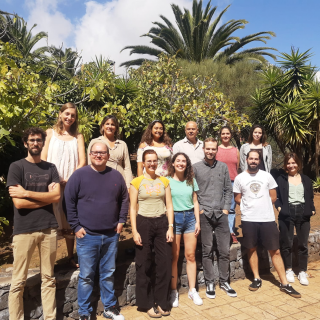Bibcode
Walo-Martín, Daniel; Pérez, Isabel; Grand, Robert J. J.; Falcón-Barroso, Jesús; Pinna, Francesca; Martig, Marie
Bibliographical reference
Monthly Notices of the Royal Astronomical Society
Advertised on:
9
2021
Citations
7
Refereed citations
6
Description
The connection between the Stellar Velocity Ellipsoid (SVE) and the dynamical evolution of galaxies has been a matter of debate in the last years and there is no clear consensus whether different heating agents (e.g. spiral arms, giant molecular clouds, bars and mergers) leave clear detectable signatures in the present day kinematics. Most of these results are based on a single and global SVE and have not taken into account that these agents do not necessarily equally affect all regions of the stellar disc. We study the two-dimensional (2D) spatial distribution of the SVE across the stellar discs of Auriga galaxies, a set of high resolution magnetohydrodynamical cosmological zoom-in simulations, to unveil the connection between local and global kinematic properties in the disc region. We find very similar, global, σz/σr = 0.80 ± 0.08 values for galaxies of different Hubble types. This shows that the global properties of the SVE at z = 0 are not a good indicator of the heating and cooling events experienced by galaxies. We also find that similar σz/σr radial profiles are obtained through different combinations of σz and σr trends: at a local level, the vertical and radial components can evolve differently, leading to similar σz/σr profiles at z = 0. By contrast, the 2D spatial distribution of the SVE varies a lot more from galaxy to galaxy. Present day features in the SVE spatial distribution may be associated with specific interactions such as fly-by encounters or the accretion of low mass satellites even in the cases when the global SVE is not affected. The stellar populations decomposition reveals that young stellar populations present colder and less isotropic SVEs and more complex 2D distributions than their older and hotter counterparts.
Related projects

Traces of Galaxy Formation: Stellar populations, Dynamics and Morphology
We are a large, diverse, and very active research group aiming to provide a comprehensive picture for the formation of galaxies in the Universe. Rooted in detailed stellar population analysis, we are constantly exploring and developing new tools and ideas to understand how galaxies came to be what we now observe.
Anna
Ferré Mateu